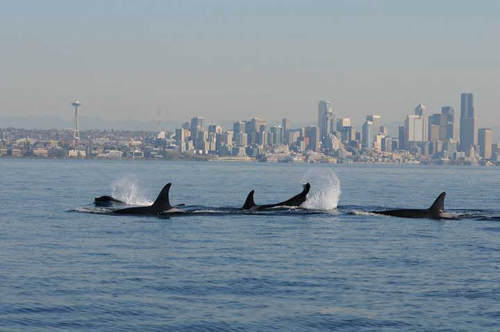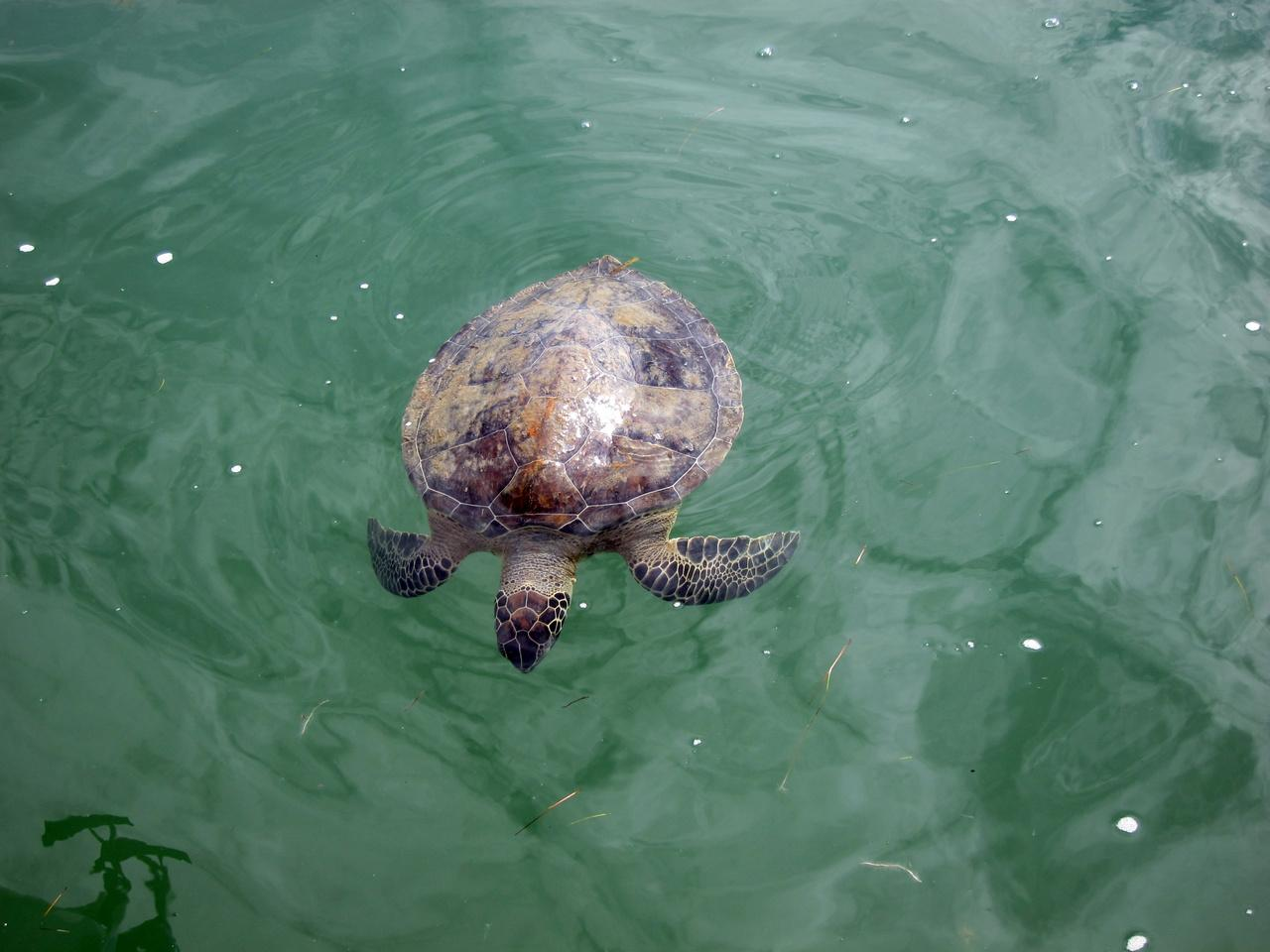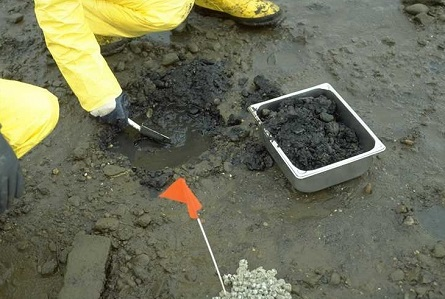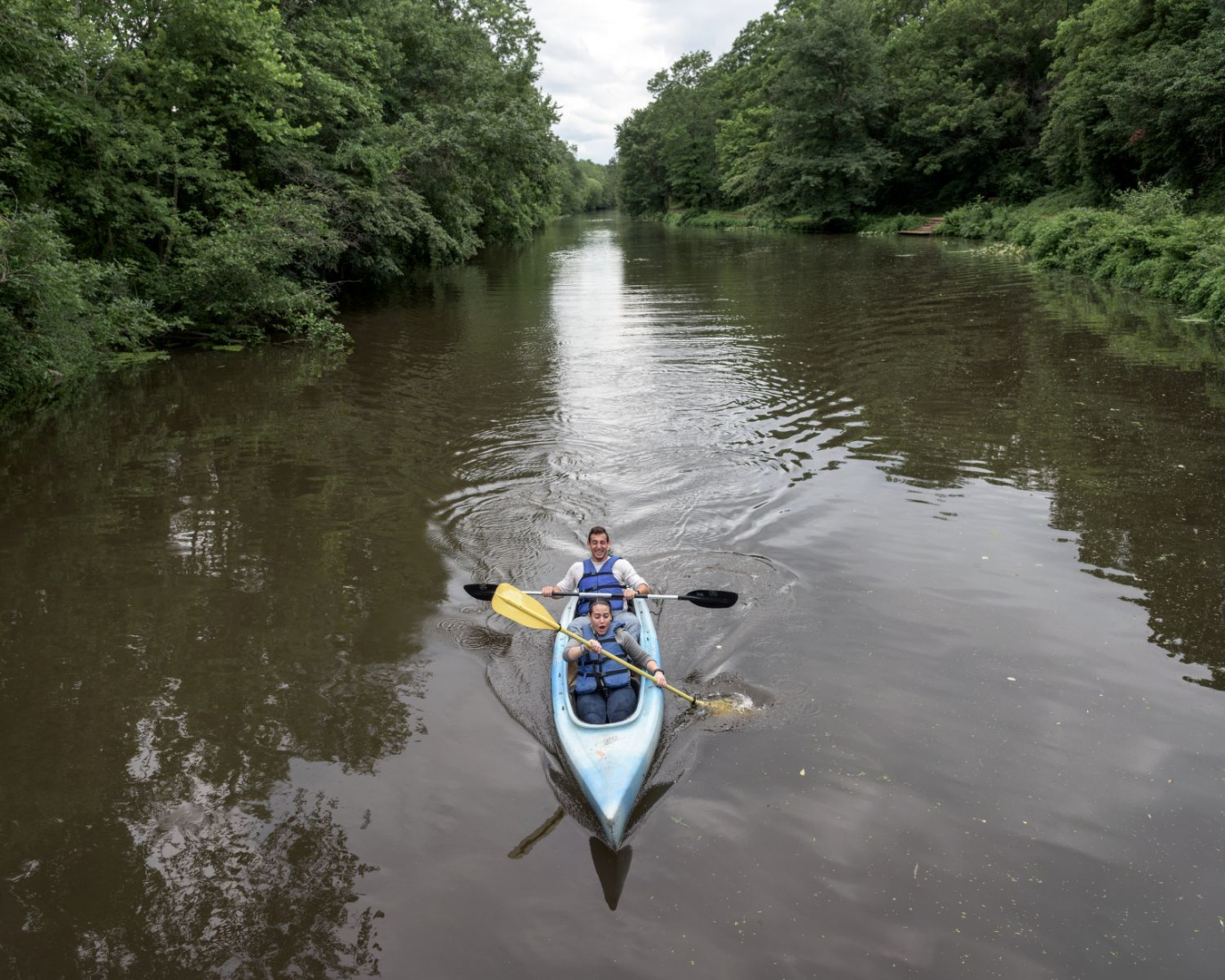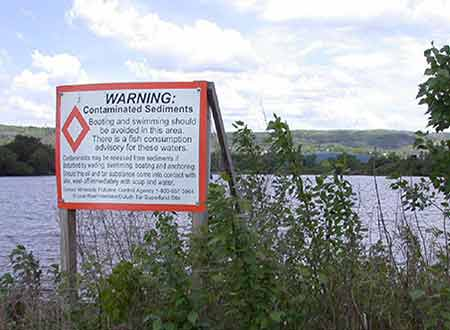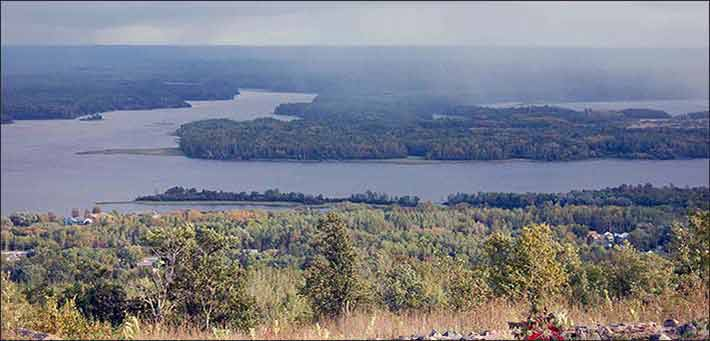This week, we’re taking a look at the different types of urban industrial pollution, how NOAA responds to pollution events and aids in the recovery of natural resources lost due to pollution, and what you can do to help keep pollution out of your waterway. Stay tuned as we explore these topics through a series of blogs. To explore more restoration projects and waterways, visit the Damage Assessment, Remediation, and Restoration Program case finder.

You might be surprised to learn what swims through America’s cities. Even waterways with a history of pollution are full of life and are vital parts of local communities.
Coastal Superfund sites, where hazardous waste contaminates the environment, are one of the key sources of pollution for many urban waterways. Many American cities sprang up around waterways because they provide opportunities for transportation, trade, and industry. Unfortunately, many of these industries also release contaminants into the environment—where they can linger for decades.
This pollution can have a wide range of impacts for fish, wildlife, and the communities that surround them. At the same time, urban waterways remain a vital part of cities. They provide green spaces to recreate for local communities and important habitats for fish and wildlife, all while continuing to fuel local economies. All these overlapping interests are important to take into consideration while working to cleanup and restore urban waterways.
NOAA’s Office of Response and Restoration works with a team of scientists, economists, and attorneys via the Damage Assessment, Remediation, and Restoration Program to understand the impacts of pollution and hold polluters accountable through legal settlements. Those funds are then used to fund restoration projects like constructing wetlands, enhancing fisheries, building parks, and protecting habitats for marine mammals and endangered species. Oftentimes NOAA works on multiple sites on one waterway, each in different stages of assessment and restoration.
Let’s explore five urban waterways across the U.S to see the unique natural resources found there and learn where NOAA and co-trustee partners are working to restore urban habitats and communities.
The Hudson-Raritan Estuary, New York and New Jersey
Estuaries, where freshwater meets the ocean, are some of the most productive and vibrant ecosystems on the planet. The Hudson-Raritan Estuary happens to be on the doorstep of New York City. More than 200 species of fish live alongside over 20 million people in this urban waterway, including migratory fish like American shad, Atlantic sturgeon, striped bass, and American eel. Wetlands provide habitats for crabs and mussels, oyster reefs filter water, and marshy islands provide nesting habitat for a wide range of birds. Harbor seals are commonly found in these waters, and larger marine mammals like whales are known to pass through.
At the same time, the Hudson-Raritan Estuary contains multiple large Superfund sites where pollution impacts these natural resources and makes some seafood unsafe to eat. NOAA continues to work on cases including the Hudson River, Passaic River, Berry’s Creek, Newtown Creek, Raritan Bay Slag, Gowanus Canal, Piles Creek, and Quanta. We continue to use sound science and collaborate with federal, state, local, and community partners to work towards the protection and restoration of this important ecosystem.
Puget Sound, Washington
There aren’t many places in the world where you can spot a pod of killer whales from a city street, but Seattle is one of them. The Puget Sound and its interconnected network of tributaries are home to a spectacular diversity of ocean life including marine mammals, birds, crustaceans, and protected salmon species. These migratory fish, including endangered Puget Sound Chinook and Puget Sound steelhead, spend their lives in the ocean but return to the freshwater rivers of their birth to spawn. Every city along the Puget Sound, including Tacoma, Everett, and many others, offers opportunities to connect with and enjoy nature.
Unfortunately, hazardous waste pollution has also impacted many of these natural resources. This is of particular concern to indigenous tribes of the region to whom species like salmon have important cultural value. NOAA is working alongside indigengous tribes as co-trustees for cases including Western Port Angeles Harbor, Port Gardner, Commencement Bay, and the Lower Duwamish River, to assess the impacts of pollution and restore these natural resources for all that value them.
Houston Ship Channel, Texas
Part of Galveston Bay, the Houston Ship Channel is a waterway made deeper and wider to accommodate ship traffic. It’s one of the busiest ports in the world. Like the nearby Gulf of Mexico, it’s also incredibly diverse. Tidal salt marsh provides shelter for shellfish and nesting habitats for birds, while water-filtering oysters build reefs along the bottom. Recreational anglers can hook fish species including red drum, catfish, and spotted seatrout. The Houston Ship Channel is both a wild ecosystem and a working waterway.
Unfortunately, one consequence of these industrial practices has been pollution. Multiple hazardous waste sites are found along the Houston Ship Channel including Tex Tin Corporation, Malone Service Company, Bailey Waste Disposal Site, and others. This pollution has impacted wildlife and made fish in some places unsafe to eat. NOAA is working with our partners at these sites to assess the impacts of pollution and restore the environment.
Delaware River Estuary, Delaware and Pennsylvania
The Delaware River Estuary is a tidal river flowing through urban Philadelphia, Pennsylvania and Wilmington, Delaware with an interconnected series of tributaries stretching into New Jersey. It is one of four estuaries in North America where over a million shorebirds rest during migration, and home to important species like horseshoe crabs, oysters, and clams. In addition, the Delaware River provides opportunities for people to hike, paddle, and recreate in the centers of urban Philadelphia and Wilmington.
However, the Delaware River Estuary also faces significant challenges from pollution. A variety of industrial practices contaminated parts of the river. In addition to impacting fish and wildlife, this pollution adversely impacted outdoor recreation opportunities. NOAA continues to work at sites including Metal Bank, Dupont Newport, Dupont Hay Road, and Army Creek Landfill in assessment and restoration. NOAA also coordinates with the Urban Waters Federal Partnership in this region to connect underserved communities to opportunities for environmental and neighborhood revitalization.
St. Louis River and Interlake, Wisconsin and Minnesota
The St. Louis River in Duluth, Minnesota flows into Lake Superior on the border between Wisconsin and Minnesot. Indigenous tribes have lived, fished, and gathered along this waterway for thousands of years. Spirit Lake and Spirit Island in particular are central to the Anishinaabe (Ojibway) migration story. It was near Spirit Island where the Ojibwa encountered manoomin, meaning “food that grows on water” or wild rice, marking the end of their journey.
Unfortunately, hazardous waste pollution from industrial practices at two Superfund sites have contaminated parts of the St. Louis River. This has resulted in adverse impacts to natural resources and human uses, including recreation and tribal cultural uses. NOAA is working in coordination with our tribal co-trustees at the St. Louis River U.S. Steel Site and St. Louis River/Interlake/Duluth Tar site to assess the impacts of pollution and restore this important ecosystem.




